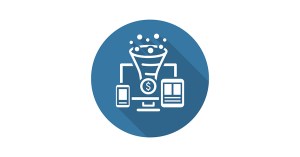
Good salespeople don’t want their customers to fall down. In fact, the core of every great pitch is arguably about supporting customers with products and services that not only help them keep standing, but grow even larger. That may make the notion of “tripwire” sales and marketing sound a little mean-spirited, but it’s not.
The tripwire in this case is something small but meaningful that gets a prospect to convert, at least to some degree, to a real customer. Sometimes these are discounts on products or services. In other cases there are true “loss leaders” that don’t bring in direct revenue but lead to revenue-generating opportunities at a later date. Although this is in some respects a tried-and-true technique, Canadian small and medium-sized businesses may hesitate to try it for fears it proves unprofitable, time-consuming or difficult to execute. The good news is, it’s not.
Find The Tripwire You Already Have
Most SMBs sell far more than one product or service, and even within individual products and services there are pieces that could be offered for free or at a low cost as a tripwire. The best way to do this is to look at the portfolio of goods you offer a customer – where the total price point might be off-putting, for example – and using one feature or item as a way to get them hooked.
- Assessments or evaluations – people often talk about a free quote or estimate, but the real value comes in a thoughtful consultation that looks not only at the prospect’s needs but their position vis-à-vis the rest of their market. Use your CRM data here to offer a means of benchmarking the prospect’s competitive stance (or lack thereof).
- Mockups, prototypes and templates – the most standardized offerings you have are probably the most commoditized. In other words, you are better able to charge a premium for things that need to be more customized to a specific client. If you’re a B2B firm offering to help do a complete overhaul of their digital presence, perhaps start by offering a free template or theme that would make a specific part of their web site (like their blog) stand out.
- Trial offers – there’s nothing like recurring revenue, but before you have customers locked into a monthly or annual contract, look for a time period that would prove the long-term value and reduce the price or give them a “try before you buy” option.
Align The Tripwire With The Purchase Cycle
Most B2B customers move through a fairly standard process where they become aware of a potential solution to one of their business challenges, followed by a period where they research the available offerings, consider each one and then make a decision. It’s not only important to have a tripwire but to think about when and where you want to “plant” it. Again, this is where the effective use of marketing analytics and CRM pays off, because you can examine trends from existing customers to pinpoint these areas. Let’s break this down a little further:
Awareness phase: A consultation or free evaluation may work best here, in order for the prospect to understand how such products and services work, or whether they need them at all.
Consideration: This is where a free or inexpensive offering (an online calculator, free survey research, etc.) will show prospects you’re willing to give something away with no strings attached, other than staying in the game.
Decision: Trial offers may be ideal when the customer is nearly there but not ready to commit, or when they are not able to immediately get access to the budget dollars they need.
Follow Up The Tripwire By Marketing Your Core Offering
A tripwire only really works if the prospect not only accepts it but migrates to a paying customer. This could take time in some cases, but it’s where marketing efforts should complement the sales pitch. For example:
- Email marketing should be tailored to those who take a tripwire, with content that spells out the “after picture” other customers have experienced by making a real investment.
- Webinars that show in more detail how they can take the next step and achieve greater results by paying more.
- Live events where tripwire prospects can be in a room with their peers who have paid for full versions of products and services and can offer real feedback about their ROI.
A tripwire is a means to and end, and smart prospects will realize it. So approach it as less of a trap than a way to nurture an honest, mutually beneficial relationship.
For more advice on getting close to your prospects and customers download Salesforce’s free eBook:



























